Northern Tuscany Itinerary with Typical Food
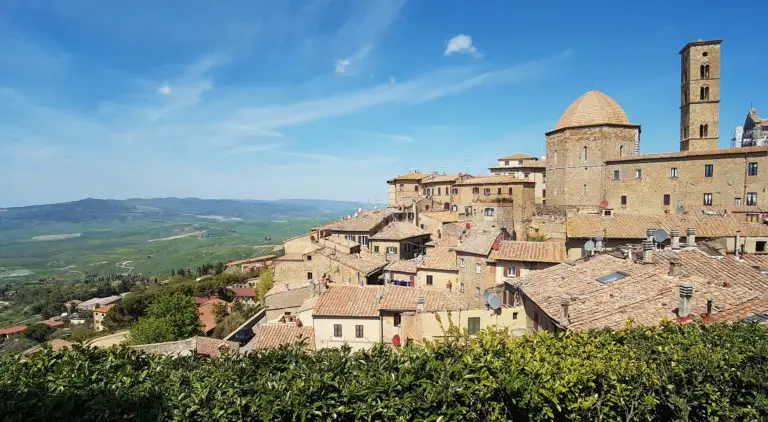
Tuscany is so popular all over the world for its beautiful landscapes and history of art, not to mention typical food (Florentine steak rings a bell?) and local wines as Chianti and Montepulciano.
However, I think there is always something new to discover. In fact, in this article you’ll get to know less known Tuscany typical dishes and wines of 7 places I personally visited – each town and city has its own traditions, believe me!
Traveling in northern Tuscany: Useful Info
Tuscany is beautiful at any time of the year.
I always go in summer (just because it’s the only time when I can get long vacations) which is quite hot, so I recommend going either in spring (nice weather) or fall (perfect for visiting wineries and vineyards). As for winter, it has its advantages: it’s not harsh and, in addition to that, if you go at Christmas (or a couple of weeks before) you will get to see another side of the Tuscan cities, all decorated for this holiday.
Many visitors who are planning to visit Tuscany often wonder how many days you need in this beautiful region. Even though there is no right answer for that, I can assure you that:
- Florence is just amazing and, although you can see the whole city center in one day, if you’re interested in visiting the museums and the surroundings you will need 2-3 days.
- Pisa, Lucca, San Gimignano, Volterra, Viareggio and Siena city centers can be visited in one day (or one afternoon, if you’re tight on your schedule). Of course, if you’re planning to do extra activities such as wine tastings or want to visit the villages in the country, take a couple days more.
Wondering where to base yourself in Tuscany? No prob! Take a look at my article and you will find a lot of helpful recommendations.
My advice is to split your time between visiting the cities and the surroundings. Spend a night in a nice agriturismo (farmhouse) in the Tuscan countryside, enjoy a visit in the vineyards, discover truffle hunting and find out about a slow-paced lifestyle. You won’t regret it, promise that!
In case you decide to go for a day trip in any of these cities and are traveling from one to the other without staying for the night, you may want to deposit your luggage in a safe and convenient luggage storages in the city – and where to leave your belongings for free!
If you intend to follow this itinerary (personally experienced), I suggest renting a car just because it’s easier to get around Tuscany and it’s..faster.
Trains connect the main cities, but to reach more secluded places you really need a car, unless you want to spend the whole day on transit. Keep calm, driving in Tuscany is not difficult, it’s not a place where people drive like crazy. If even a bad driver like me can do that, you won’t have any problems!
Tuscany Typical Dishes
Trabaccolara, peposo, tordelli, crostoni ai fegatini are only a few of northern Tuscany typical dishes.
In fact, there are so many local specialties that it was difficult even for me to include all of them in this article! Here I explore not only food but also local wines such as Vernaccia di San Gimignano DOCG, which you cannot miss to try.
Now that you have a better understanding on when and how to visit northern Tuscany, let’s d(r)ive into this Tuscany experience and find out about authentic food and wines!
What Does This Itinerary Include?
- 7 gems in northern Tuscany: starting from the well-known Florence, Pisa, San Gimignano, Volterra and Siena to the off-the-beaten-track Lucca and Viareggio;
- What to see and visit in each city;
- Typical food and wines you can find in each city;
- Best restaurants where to eat Tuscany typical dishes;
- My personal recommendations based on my experience (summer 2020).
1. Florence, A Capital Rich in History, Art..and Food!
1.1 What to See in Florence in One Day
Start your day in Florence from Santa Maria Novella Church and its square. Admire the magnificent Renaissance style façade of the church, Ospedale San Paolo and the marble obelisks dating back to the 16th century.
Just 10 mins away on foot are the church of Santa Maria del Fiore with its superb bell tower by Giotto and dome by Brunelleschi, the Duomo (Florence Cathedral), the Romanesque octagonal Battistero di San Giovanni (the Florence Baptistery, also known as the Baptistery of Saint John) and the Crypt of Santa Reparata, the ancient church where Santa Maria del Fiore was built on.
Visit the official website for updated information about opening and closing times and ticket prices here.
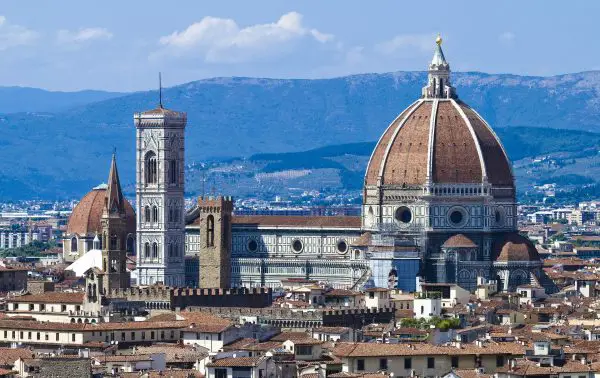
Interested in museums? In case you have enough time, visit the Bargello National Museum, mainly dedicated to sculptures, and Dante House Museum.
Step in Piazza della Signoria, where the Fountain of Neptune stands in the center. Here you will see Palazzo Vecchio, hosting the Town Hall, and Loggia dei Lanzi, born as a place to host public assemblies, later turned into an exhibition center.
What you cannot miss to visit is the Uffizi Gallery. Here you can get to see important works of art such as “Perseus with the head of Medusa” by Cellini and “The Rape of the Sabine Women” by Giambologna.
>>> Uffizi gallery, Palazzo Pitti and Boboli gardens tickets can be booked here.
My insider tips:
Interested in The Last Supper? In Florence there are so many! Take a peek in the churches of Santa Croce, Santo Spirito, Sant’Apollonia and the Convent of Ognissanti.
From here cross the Arno river over Ponte Vecchio: the original structure dates back to Roman times, when it was a ford. Reach Palazzo Pitti, which served as the main residence of the Medici family, and Giardino di Boboli (Boboli gardens), one of the greatest examples of Italian gardens in the whole peninsula.
From Palazzo Pitti, take a nice walk (about 20 mins) – alternatively, take bus number 12 from Pratolini stop – and reach Piazzale Michelangelo, where you’ll get a wonderful view on the city.
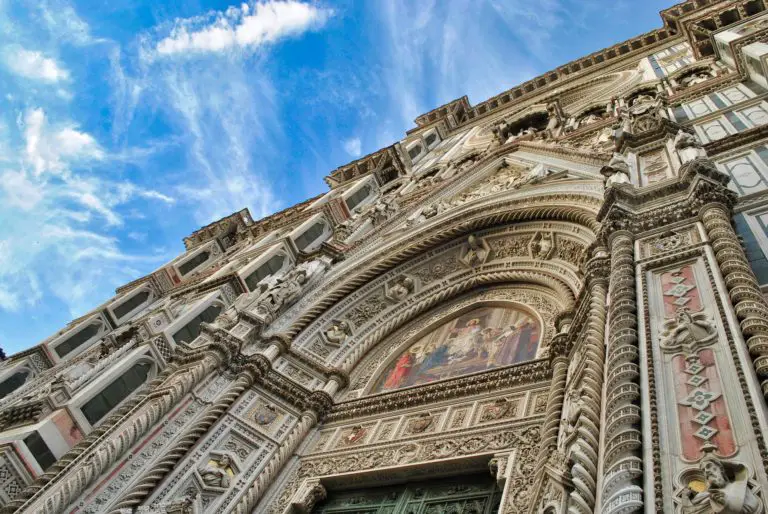
1.2 Where Do Locals Eat in Florence?
I remember when I had lunch here with a friend of mine: we were sitting at a table with two other guests (an American couple on their honeymoon in Italy). We had pappa al pomodoro and a great Florentine steak..and the bill was more than reasonable!
Even though their menu changes everyday, you will always find typical Tuscan food in this warm and welcoming Trattoria. For example, you can get to taste “trippa alla Fiorentina” (Florence-style tripe), “peposo di manzo” (beef stew cooked in Chianti, tomatoes and pepper), “ribollita” (Florentine soup similar to Zuppa Toscana, made when kale is in season), “fagioli all’uccelletto” (typical Tuscan side dish made of beans stew cooked in a fry of garlic and sage). Of course, the king dish is the Florentine steak, rigorously rare!
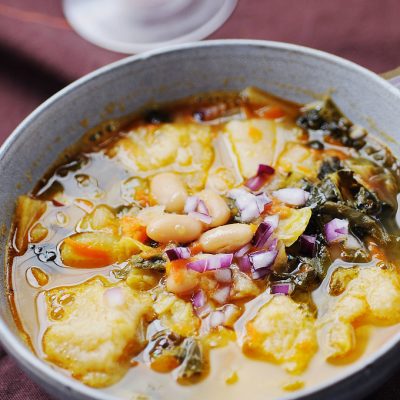
2. Viareggio: A Gem on Versilia
Viareggio is well-known for its immense promenade along the seaside, where every year Carnival is celebrated with a long parade of papier-mâché floats – the tallest in the world!
2.1 What to Do in Viareggio
Viareggio is ideal not only for families who want to spend time at the seaside (services here are great, you don’t need to move a finger!), but also young people looking for fun – there are plenty of bars and cafés ready to welcome you.
Also, if you enjoy riding a bike, you can rent one and spend an afternoon riding in the pinewood or reach other towns along the Versilia coast, such as Lido di Camaiore, Marina di Pietrasanta, Forte dei Marmi and, if you go south, Marina di Torre del Lago Puccini, named after the famous Italian composer who lived in this village (his villa is still there and can be visited).
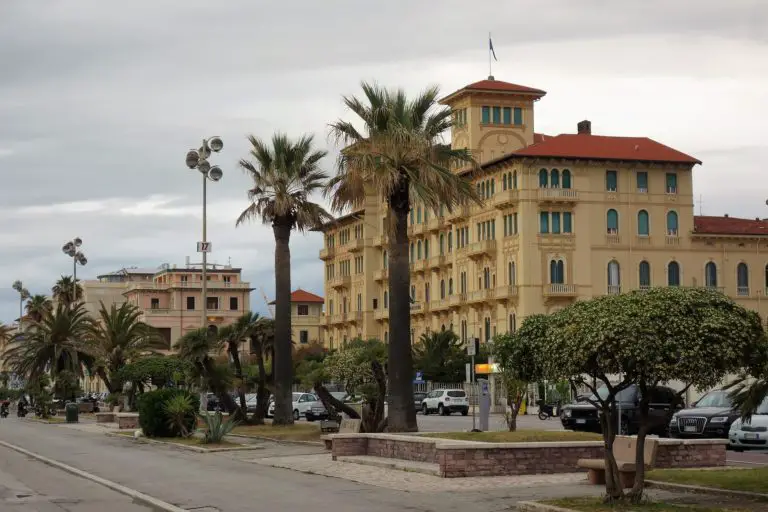
2.2 Where to Eat in Viareggio
Bar Trattoria Nostromo
My recommendation is Bar Trattoria Nostromo, located in the historical neighborhood called Darsena. Their menu changes according to their catch of the day, which means fresh fish is guaranteed!
Here I had a delicious “Padella del Nostromo” (seafood soup to share between two people) for just as little as € 15 per person. I also had a mix of appetizers for just € 12 including four dishes (cacciucco-style musky octopus, mullet marinated in red onions, salmon, fried cod).
All dishes are inspired by the traditional local cuisine. In fact, you cannot miss their “trabaccolara”, pasta served with a special sauce typical of Viareggio. Amazing!

3. Lucca and the Renaissance Walls
Lucca is a small but lovely town located on the Serchio river, just a few km away from Florence. It is renowned for its Renaissance walls surrounding the historical center and its pebbly inner roads.
Not only can you walk on these medieval streets, but you can also get to walk on the walls themselves: locals go jogging or have walks and chats with friends here.
If you drive to Lucca, park your car in via Angeloni parking (Porta San Donato), it’s free!
3.1 What to See in Lucca in One Day
One day is enough to visit this cozy town as all landmarks are within the city center walls. Here is a list of must-see places in Lucca:
- The Romanesque Basilica of San Frediano, one of the most ancient places in Lucca. Between the 13th and 14th centuries the striking façade was decorated with a huge golden mosaic representing The Ascension of Christ the Savior in a Byzantine/medieval style. Absolutely stunning!
- Palazzo Pfanner (palace and garden), built by the Moriconi family, silk merchants and members of the nobility of Lucca, in 1660. The Palace was handed over to several families until 1846, when the Pfanner family finally took over. Today the Palazzo is still property of the Pfanner family, still living here, who has brought out the best of this building over the years, opening it to the public and organizing events.
- The Roman Catholic church of San Michele in Foro;
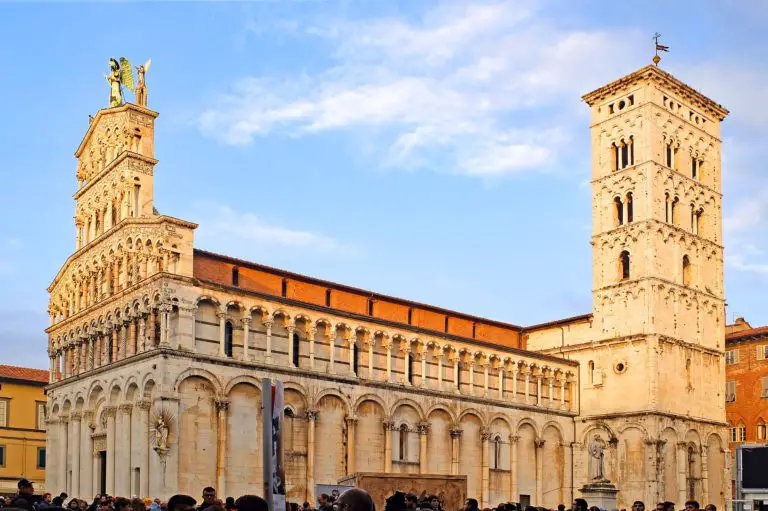
- St Martin Cathedral (Duomo di San Martino), where you can see the funerary monument of Ilaria del Carretto, commissioned by the Lord of Lucca Paolo Guinigi to commemorate his wife after her death in 1405. This 15th century sculptural masterpiece was realized by Jacopo della Quercia, an innovative artist from Siena.
- Torre Guinigi (about 45 mt tall, this is a typical example of local Romanesque-Gothic architecture). Ticket: € 5.00 / person. On top is a rooftop garden where large centuries-old holm oaks have been planted; even though it can be reached after climbing no less than 230 steps, the panorama from that height is particularly suggestive: in addition to the historic center, you can get to see the surrounding hills of Lucca in the distance.
- Piazza dell’Anfiteatro, whose ring of buildings surrounding the square follows the elliptical shape of the former second-century Roman amphitheater of Lucca. The central tile is carved with a cross whose arms point to the four gateways of the square.
My insider tips:
If you have time or are planning to stay a couple of days in Lucca, don’t miss the surrounding area comprising Serchio Valley and the mountainous area of Garfagnana.
Serchio Valley, located north of Lucca, is full of small villages worth a visit: to name a few Barga, Bagni di Lucca and the nature reserve called “Orrido di Botri”, Borgo a Mozzano and the famous Devil’s Bridge. In Garfagnana, visit the town of Castelnuovo di Garfagnana, which is home to Parco dell’Orecchiella, a nature park famous for its chestnuts. Bring a pair of trekking shoes to explore the area!
3.2 Where to Eat in Lucca
Locanda Buatino
I had lunch at Locanda Buatino on a hot summer day and took delicious pappa al pomodoro, a Tuscan specialty prepared with stale bread, peeled tomatoes, garlic, basil and extra virgin olive oil, and tordelli lucchesi, egg pasta filled with a mixture of minced meat, mortadella, grated cheese and aromatic herbs. To top it off, a nice slice of hard cheese and honey and a glass of local red wine. The bill? €10 per person for a lunch menu.
>>> You can find more information about Lucca cuisine in my article Traditional Specialties From Lucca, Tuscany
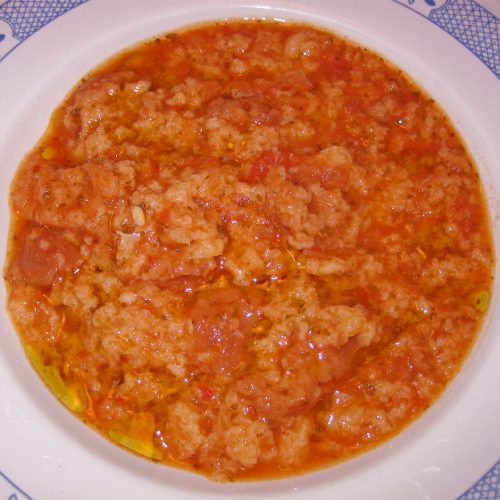
4. Pisa, Not Only The Leaning Tower
4.1 Pisa One Day Itinerary
Starting from Pisa station, just a few steps away you’ll find the great graffiti “Tuttomondo” by American artist Keith Haring, painted just a year before he died. His impressive last work on Sant’Antonio Abate church represents 30 dynamic human figures symbolizing peace all over the world.
From there, pay a visit to the small but beautiful Santa Maria della Spina church, along Arno river and walk along Lungarno Gambacorti. Enjoy a walk in Borgo Stretto, the historical city center where people go shopping and have a nice aperitivo with friends.
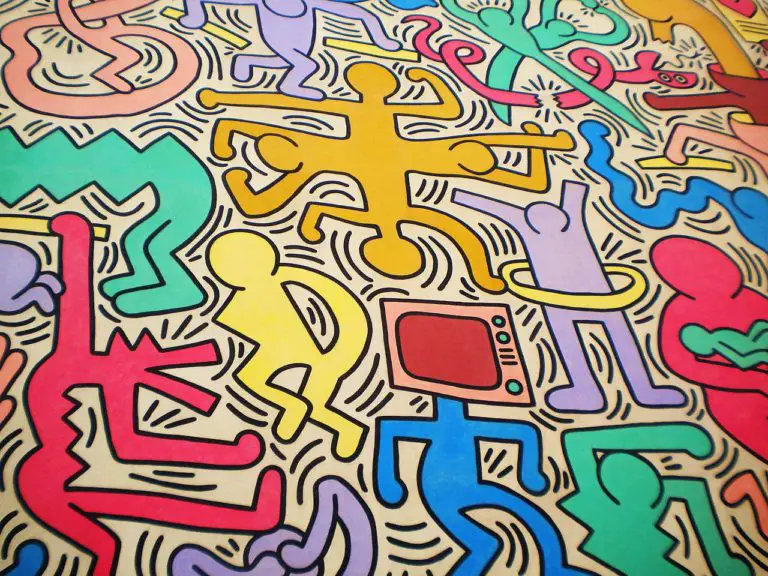
In Piazza dei Cavalieri (knights’ square) you will find:
- Palazzo del Consiglio dei Dodici, in fact 12 were the members belonging to the Council hosted in this building. The Council was part of the Holy Military Order of St. Stephen created by Cosimo I de’ Medici, first Grand Duke of Tuscany, in 1561.
- Scuola Normale Superiore (commonly known as “la Normale“), a university institution founded in 1810 by Napoleon, as a branch of the École Normale Supérieure in Paris.
- Muda Tower (also called Torre dei Gualandi), where Ugolino della Gherardesca, his sons and two grandsons were immured and starved to death in the 13th century. Dante, who was his contemporary, wrote about him in his masterpiece The Divine Comedy.

—> You may also like
Tourist Tax in Italy: the 2021 Full and Complete Guide with All Rates
Now that you’ve seen the less known parts of the city of Pisa, it’s time to get to Piazza del Duomo.
The square itself represents the best example of the Pisa Romanesque style, with a harmonious fusion of classical, early Christian, Lombard and eastern motifs.
In the square you will be mesmerized by the beauty of its Cathedral, not to mention the UNESCO heritage Leaning Tower, Baptistery and Camposanto.
It should be noted that all these buildings represent together the allegory of human life. If you wish to have more information about tickets and opening times, visit their website here.
—> You may also like
My insider tips:
Before going up to the top of the Leaning Tower, leave your belongings and coats in the wardrobe on the left (follow the signs): it is included in the ticket, which is € 20 including the Duomo (as of March 2022). The Baptistery is worth a visit (€ 7 / person) as well as the Camposanto, of course.
4.2 Where to Eat in Pisa
When I was in Pisa I had a wonderful zuppa toscana (Tuscan soup) at Il Baronetto, a deli where you can find fresh typical Tuscan dishes. Alternatively, in the same area, Trattoria Sant’Omobono offers authentic local dishes that vary according to the season: hope you can get to taste their “Pisan bordatino” (typical less known soup from Pisa) and “renaiola” pasta (long shaped pasta with herrings and turnip greens).
As for desserts, you can find all sorts of cakes, cookies and sweets at “Il Vecchio Forno” (Vicolo del Tidi, 28): here I bought Cantuccini, Pisa Panforte, Pinolata of San Rossore, Pisan Ricciarello, Cavallucci di Noci and Brutti Boni (also called “brutti ma buoni”, literally ugly but good). After a bite, you won’t know what hunger is.
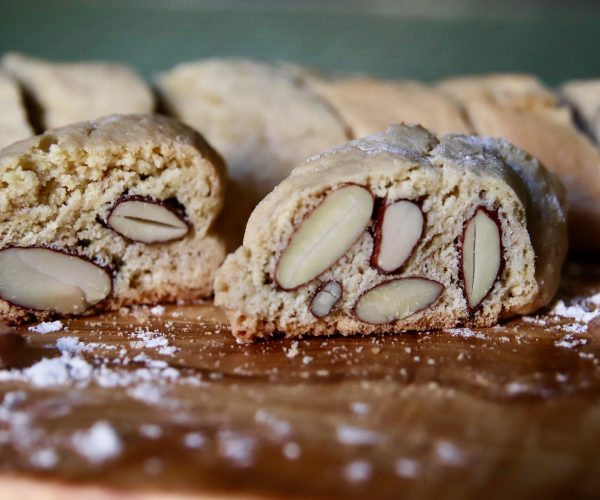
—> You may also like
5. San Gimignano, the Town of Fine Towers
San Gimignano is a small lovely hill town close to Siena, known as the Town of Fine Towers for the unique preservation of a dozen of its tower houses dating back to the Middle Ages. The towers, together with the hilltop setting and medieval walls, make up the unforgettable skyline that we can all admire nowadays.

5.1 One Day in San Gimignano
Arrive in San Gimignano (by car, preferably) and park in Via Borri or around that area: there are available free parking slots all year round.
Reach the UNESCO heritage historical center through Porta San Matteo: the homonymous street is full of small shops selling typical products. My advice? Don’t miss the chance to get a bottle of Vernaccia di San Gimignano DOCG, local wine produced on San Gimignano hills.
—> You may also like
Once you reach Piazza del Duomo. Here you will see the former Podestà’s Palace with its Torre Rognosa, Teatro dei Leggieri, built on the site of an ancient theatre in 1534, and the Palazzo Comunale, which stands next to the staircase that leads to the entrance of the Duomo.
Depending on the season, you will probably have to line up to get a ticket for the cathedral (€ 4.00 including the audioguide). The visit takes about 45 mins – if you wish to know all details about the internal frescoes.
My insider tips:
Don’t go to San Gimignano Cathedral too early. Both the Cathedral and Museums open at 10.30 am!

Behind the Duomo is Piazza delle Erbe, whose most interesting architectural features are the two “twin” towers, erected by the Ghibelline Salvucci family. From there, pay a visit to La Rocca, from where you can get a stunning view on the surrounding hills!
Passing below the archway Arco dei Becci e Cugnanesi you get to the most beautiful square of San Gimignano: Piazza della Cisterna. Originally lined with workshops and taverns, it takes its name from the 13th-century-old travertine well in the middle of the square.
From here take a stroll in via degli innocenti (another panoramic viewpoint) and walk as far as the Medieval Fountains, just a few mins away from the historical city center. Even though the ten Roman and lancet arches date back to the 14th century, the Lombard stony fountain is much more ancient as it dates back to the 9th century!
5.2 What to Eat in San Gimignano
As mentioned before, Vernaccia di San Gimignano DOCG (white wine) is a must try. It was the first Italian wine to be awarded the DOC designation back in 1966. Vinsanto is also produced here – take a glass to enjoy with typical Tuscan cantuccini!
Other typical products of San Gimignano are sapphron, which has been used for recipes since 1228, and extra virgin olive oil, delicious on a nicely toasted bruschetta.
Of course we should also mention cold cuts such as soprassata, in which lemon zest, pepper and nutmeg are used for enhancing its aroma, buristo, a sort of sanguinaccio (blood sausage), and cinta senese ham, also found in other areas of Tuscany.
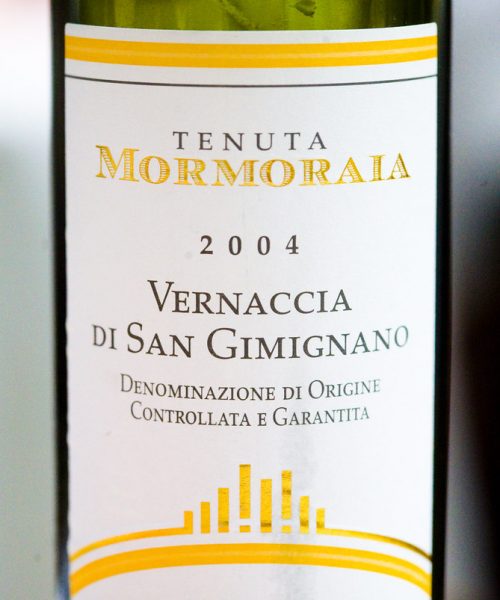
—> You may also like
>> Are you interested in learning Tuscan recipes first hand?
Simonetta and Paola from Toscana Mia Cooking School are very happy to help you! These savvy ladies provide zoom and in person cooking classes on pasta and other delicious Italian dishes.
Get a 10% OFF! Sign up here
> Check out our LIVE SHOWS here
6. Volterra, Between Alabaster and Etruscans
6.1 What to See in Volterra in One Day
Only reaching Volterra is an amazing experience: either you’re riding a bike or driving your car, you will be amazed by the beauty of the rolling hills. However, if you easily get car sick, be prepared! Lots of hairpin bends await you.
Parkings around Volterra are just a few and quite expensive. I advise you to take Viale dei Filosofi and park in the first street on the right (free of charge and no time limit).
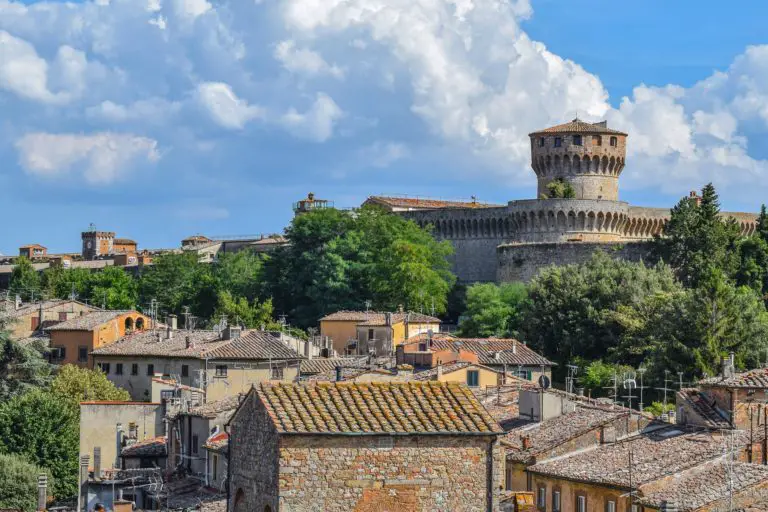
My advice is to take a stroll in the tiny medieval streets of the historical city center.
Get in through a “porta” (city gate) and explore the town. Reach piazza dei Priori where you can visit the Cathedral (Cattedrale di Santa Maria Assunta), Palazzo dei Priori and the Casa-Torre Buonparenti, a tower house built in the 13th century for defensive purposes.
If you’re into museums, it would be interesting for you to visit the Alabaster Ecomuseum, where you’ll get to know all about Volterra ancient craft, from the excavation of the stone to its production and commercialisation.
Alternatively, discover the Etruscans’ way of living, beliefs and objects of these ancient inhabitants of Volterra in the Etruscan Museum.
6.2 What to Eat in Volterra
You probably already know that Tuscany is famous for being the region of truffle hunting. What you might not know is that Volterra, specifically, is the city where you can get to taste two types of truffles typical of this area: the Bianchetto (or Marzuolo) truffle and the Black Summer (or Scorzone) truffle.
Also, do not forget that Volterra is a land rich in cheeses and cured meats: just think of Pecorino delle Balze Volterrane PDO with its sweet but spicy flavor, and the Cinta Senese ham, with its intense but balanced taste.
What dishes not to miss out? Cinghiale alla volterrana (Volterra style wild boar) is a must – intense flavor of meat simmered with excellent red wine is guaranteed! – as well as trippa alla Volterra (Volterra style tripe). This dish is linked to alabaster workers who used to have it for breakfast, accompanied with cold cuts and pecorino cheese.

7. Siena, UNESCO Heritage Site
Siena is famous all over the world and its historical center was designated UNESCO heritage in 1995. Not only is it a lovely town, but also interesting to discover.
The city is divided into 17 “contrade” (districts), ten of which take part in the yearly Palio. Each “contrada”, having a number of families belonging to it, has its own symbol, which you can find scattered all over the city – I had fun looking for their crests in every nook and crannies!
7.1 One Day in Siena
Parking in Siena is quite hard as you’re not allowed to drive in the historical center unless you’re a resident. Therefore, you need to park outside of the city center. There are many pay parkings around the city walls – I parked in Parcheggio Santa Caterina (parking fee: 2 €/hr) which is just 15 mins on foot from Piazza del Campo.
Of course, you don’t want to miss a visit to the Duomo, along with the Baptistery, the Crypt, and Museo dell’Opera, where you can admire works of art by great Italian artists such as Donatello, Jacopo della Quercia, Buoninsegna, Pisano and many others. Here is some advice about this visit.
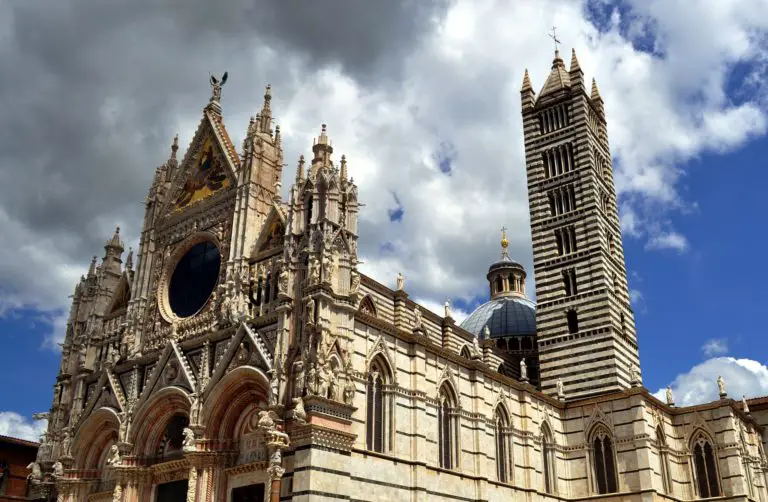
My insider tips:
Save up to 50% of single admissions by purchasing the Opa si Pass, the Siena Cathedral complex ticket, includes admission to: Siena Cathedral, Saint John’s Baptistery, Crypt, Museo dell’Opera, Panoramic Terrace of the Duomo, San Bernardino Oratory (only from March 1 to October 31), Beneath the Siena Cathedral: ‘Paths of Light’ (From June through October only).
Ticket price: € 20 (updated March 2022).
Duration: 3 consecutive days.
Ticket office opening time: 10.30 am.
If you’re only interested in the Cathedral Marble Inlay Floor and Piccolomini Library you can get a specific ticket for just € 8.
After the visit to the Cathedral complex, head to Piazza del Campo with its Palazzo Pubblico, Torre del Mangia and Fonte Gaia. Make this a memorable moment enjoying a nice aperitivo in one of the bars and restaurants of the square.
7.2 Where to Eat in Siena
Osteria da Cice
Osteria da Cice is an informal restaurant just 3 minutes away by walk from Piazza del Campo.
Start out with “crostone ai fegatini” and Tuscan cold cuts and cheeses (Pecorino). As per main courses, you can find Tuscan style pasta such as pici and Siena-style ribollita. I recommend their wild-boar tagliatelle – awesome and cheap: just € 8!
Their Florentine steak was quite something (ideal if you’re a group of 4 people). If you’re fewer than that, you can always take a stracotto alla chiantigiana (Chianti-style beef stew) or controfiletto di manzo Terra di Siena (sirloin steak). To top it off, take a glass of Vinsanto in which to dip cantuccini!
Before going back to your hotel, take some foodie souvenirs: ricciarelli, panforte and cavallucci are typical cookies from Siena (but also other parts of Tuscany), and, why not purchasing a bottle of Brunello di Montalcino, Chianti or Nobile di Montepulciano DOCG?
>> Know more about Tuscan wines here: Best Wines in Central Italy
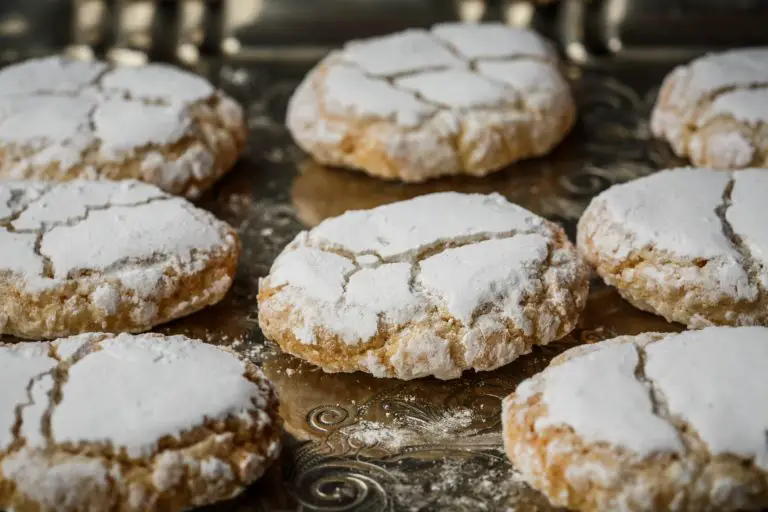
Images credits: Ribollita by 3liz4 // CC BY-NC-ND 2.0; Tenuta Mormoraia 2004 Vernaccia di San Gimignano by Thomas Hawk // CC BY-NC 2.0; Cinta senese by Dorli Photography// CC BY-NC-ND 2.0.

